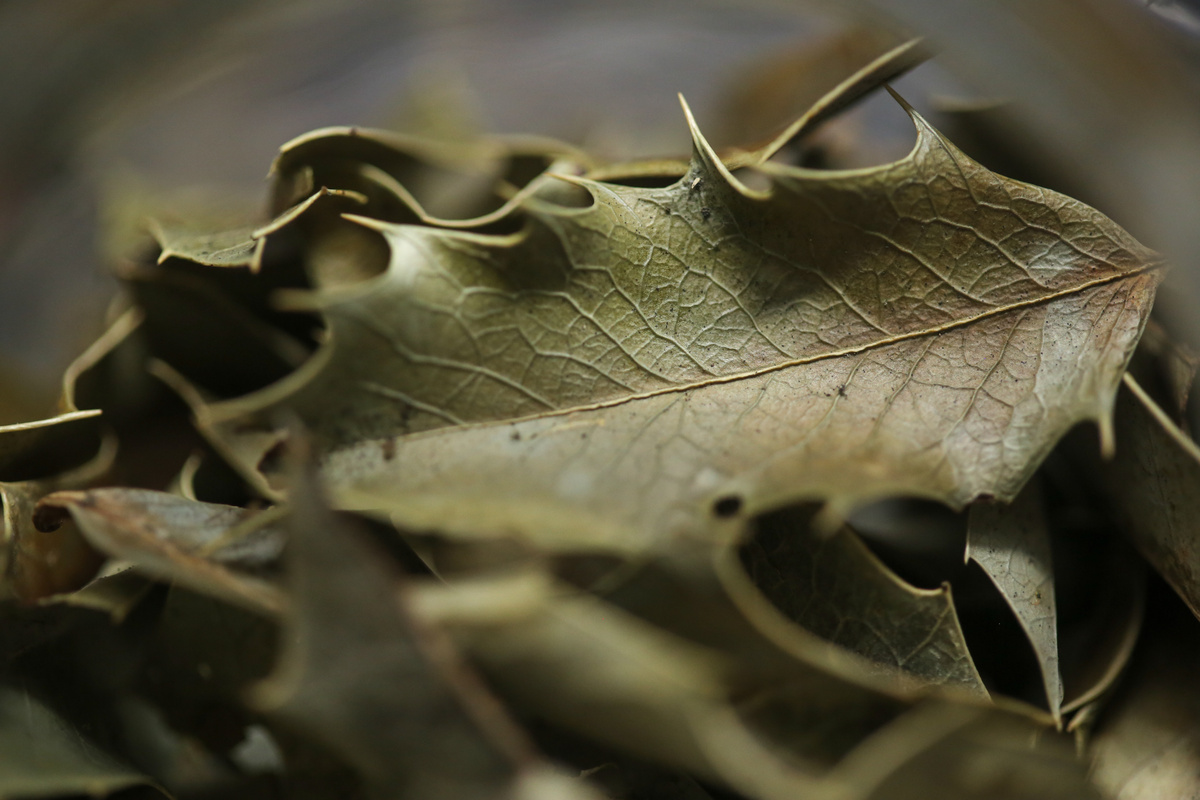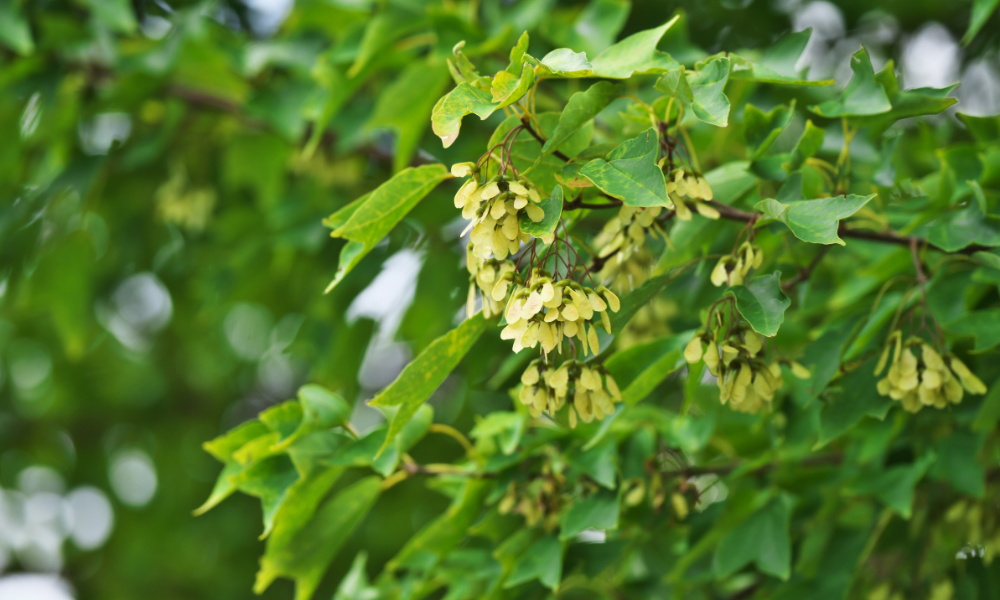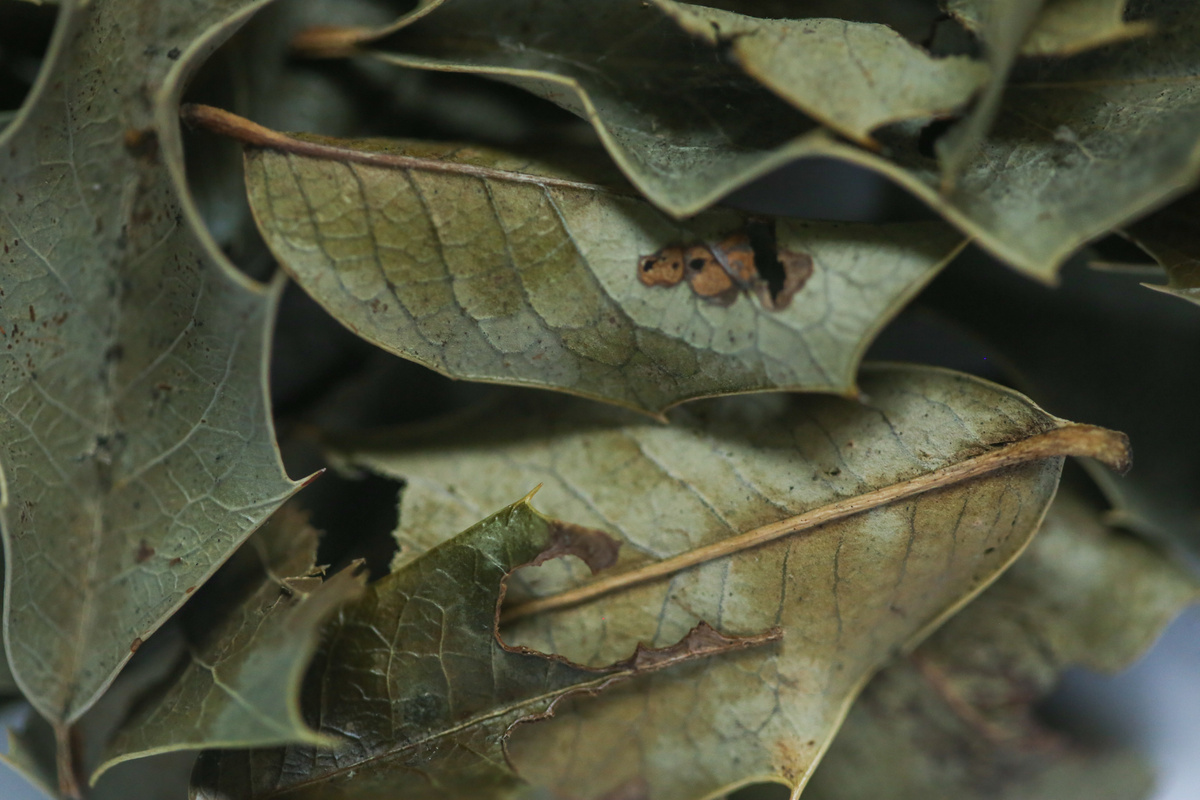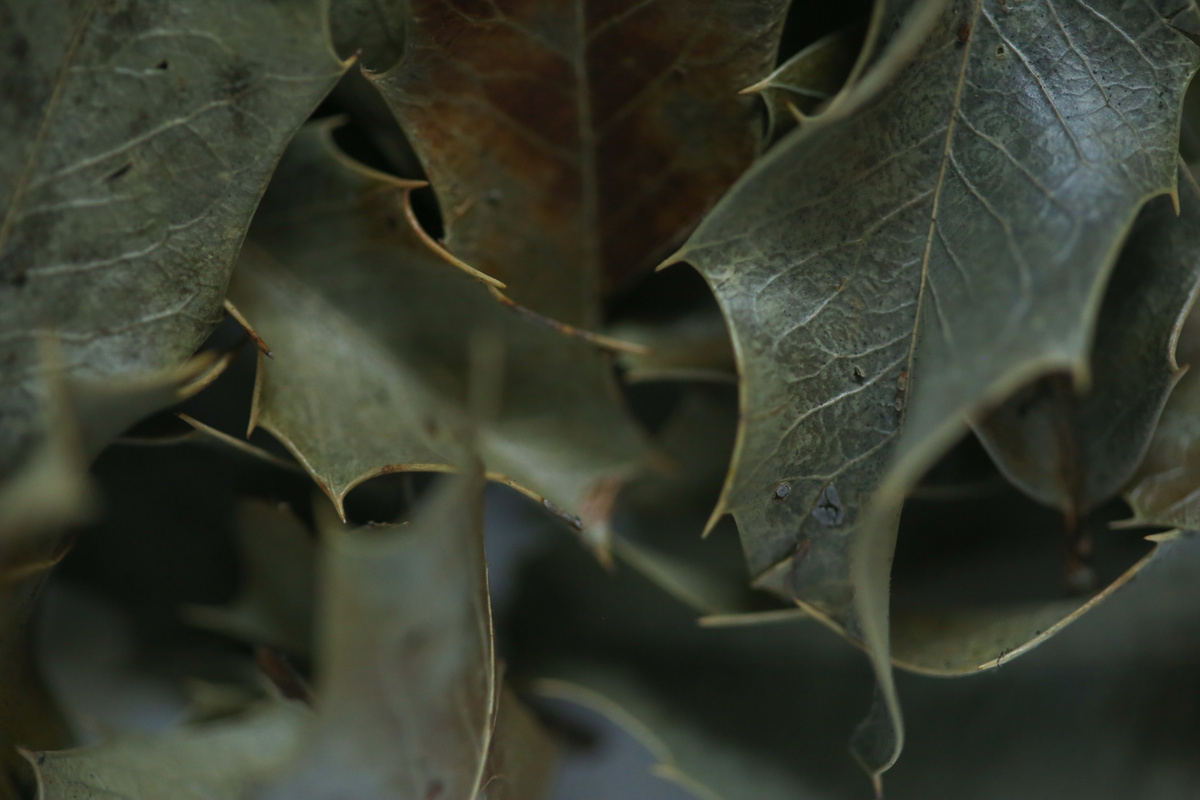Table of contents
What is hawthorn?

The espinheira-santa is a plant well known by popular medicine and scientifically recognized as a medicinal herb able to assist in the treatment of various diseases, mainly of the stomach and intestine. This, thanks to numerous properties that act as a gastric protector, healing, anti-inflammatory, antispasmodic and antibacterial.
For this reason, espinheira-santa has become one of the most studied medicinal plants and today, it is possible to find it in several pharmacological compositions. However, tea made from the dried leaves and roots is the most common form of consumption.
In this article, its fundamentals will be deepened, such as its origin and composition, in addition to presenting the various health benefits. Also learn how to use espinheira-santa and the necessary care, because despite being natural, the indiscriminate consumption of this herb can cause some unpleasant effects. To know everything about this miracle herb, read this article.
Meaning of espinheira-santa

Native to Brazil, espinheira-santa is a medicinal plant popularly known for fighting digestive diseases and treating skin lesions. However, it is necessary to understand its history, such as its origin and composition that made it a powerful and very effective natural remedy for our health.
Check below, all about this plant that is also known as life saver, thorn-of-god, cancerous herb, among others. Learn more, below.
Composition of hawthorn
The composition of espinheira-santa is very rich and it is not for nothing that the plant receives this name, because it contains tannins, which act in the body with analgesic and antiseptic effect. Besides tonic and silicic acids that also act as an effective healer in the healing of stomach wounds and skin lesions, caused by eczema and acne, for example.
Also present in the plant are substances such as fridenelol, an essential oil that works as a gastric protector, and epigallocatechin, an antioxidant that aids in the healing of ulcers and in reducing gastric juice in the stomach.
Origin of the medicinal plant
The Espinheira-santa is native to Brazil, however there is no consensus about its exact origin. It is believed that the plant appeared in Paraná, mainly because the species is well suited to riparian forests, i.e. forests or understory that grow on the banks of rivers.
However, it was only in the 1990s that espinheira-santa started to be extracted and scientifically studied. Since then, its cultivation has spread across the country and it can be found more easily in the south, mid-west and southeast.
Of the family Celastraceae
The plants of the family Celastraceae include about 98 genera and more than 1,000 species of herbaceous plants, shrubs, lianas and trees generally of small size, being found in tropical and subtropical forests. However, the most common genera to be found, especially in Brazil are Maytenus, Celastrus and Euonymus.
Such is the case of the espinheira-santa, which belongs to the Maytenus class and receives the scientific name of Maytenus ilicifolia. With wide distribution throughout the Brazilian forests, it is popularly known for its medicinal use and widely studied and used by the pharmaceutical industry.
Also known as
As it is cultivated in several Brazilian states, the plant espinheira-santa received several names, mainly given by the Indians, who believed it was a miraculous herb and later its recognition spread throughout the country.
Therefore, the espinheira-santa is also known as cancorosa, cancorosa-de-se-sepinhos, cancerosa, cancrosa, coromilho-do-campo, erva-cancerosa, cangorça, espinheira-divina, limãozinho, espinho-de-de-gus, maiteno, pau-josé, salva-vida, sombra-de-touro and marteno.
Folk medicine
In popular medicine, the espinheira-santa is widely used, especially by indigenous tribes. It received its name because it has leaves that look like thorns and is considered "a holy medicine". Its use, however, was intended to treat tumors and, for this reason, in some places, this plant is known as erva-cancerosa.
However, the herb has become well known for treating diseases of the digestive system, such as stomach sores caused by ulcers, gastritis, and pain relief in case of poor digestion. Soon, the tea made with the leaves, bark, and roots became popular and has been proven effective in several other comorbidities.
Your tree
The plant is grown in humid and clayey soils. Its tree usually branches out from its base, producing small red fruits and can reach a height of up to 5 meters.
Its plantation generally occurs in places with tropical climate, with temperatures ranging from 20º C to 30º C. In addition, it tends to develop well in more open forests and adapts to direct sunlight.
However, the planting of the Espinheira-santa is slow, and it can take from 4 to 6 years. Its harvesting, is usually done at the beginning of the first, where the plant should be at least 50 centimeters tall. To ensure that the plant sprouts every year, pruning should be done above the branch and in the middle of its crown.
Benefits of hawthorn

Well known by popular medicine and scientifically proven, the hawthorn has numerous health benefits, fighting diseases mainly related to the stomach and intestines. In addition, it has proven effective in the treatment against cancer, and is also an excellent natural healer, improving the appearance of the skin, either due to acne or more serious lesions.
To better understand the benefits of espinheira-santa, we have listed below the main diseases for which this herb can be of great help and provide quality life. Read on.
Combats stomach problems
The hawthorn contains several anti-inflammatory, antioxidant and analgesic substances that fight stomach problems. These properties act as a gastric protector, besides treating gastritis, heartburn, ulcers and poor digestion.
In addition, hawthorn helps to decrease the production of acid in the stomach, relieving stomach burning and pain, often caused by an unbalanced diet. Therefore, it is extremely important that hawthorn is used in conjunction with healthy practices, to prevent the emergence of diseases that can worsen over time.
Assist in the treatment of cancer
Still in studies, the espinheira-santa presented good results to help in the treatment of cancer, mainly, located in the lung, liver and breast. Present in the composition of the plant, the triterpenoide pristimerina helps to reduce the proliferation of cancer cells in the body.
However, it is essential that the interaction of hawthorn with cancer treatment is done under medical supervision. Under no circumstances should the medication be interrupted to make use only of the plant. In addition, it is necessary to analyze the clinical conditions of the patient, because the herb can potentiate chronic diseases such as heart and kidney disease.
Improve bowel function
Constipation is an ailment that can affect children and adults due to the side effects of medications, lack of fiber, protein and fluid intake. In addition, a sedentary lifestyle can also worsen constipation.
Thus, for those who have difficulty bowel movements, consuming hawthorn, whether in the form of tea, capsule or fluid extract can improve bowel function. This happens thanks to the mucilage, an enzyme that acts in the body as a natural laxative.
Combat H. pylori
H. pylori is a bacterium that affects the intestinal and stomach mucosa, generating inflammation and the most common symptoms are: strong pain in the stomach, gastritis, evolving in the formation of ulcers and even cancer.
Because it contains antibacterial action, the hawthorn is very useful to combat H. pylori and thus reduce the discomfort caused by this bacterium that lodges in the intestine and stomach.
Has diuretic action
Due to the presence of triterpene, a substance present in espinheira-santa, it has diuretic action, helping in the treatment of diseases of the urinary system, because it increases the production of urine, eliminating the retention of liquid and impurities that cause infections.
However, do not consume the plant in large quantities, because eliminating too much liquid tends to lead to the loss of minerals that are essential for the functioning of the body, besides causing dehydration.
Helping the healing of the skin
Besides the numerous benefits for the body, the espinheira santa can also help in skin healing, because it contains antibacterial and analgesic properties. Therefore, this plant acts in lesions, improving the appearance of scars, eczema and acne.
However, before you start making compresses with hawthorn tea, it is important to consult a doctor or if you already have a predisposition to develop allergies, avoid using the plant.
Fight bacterial infections
Analyzed in the laboratory, espinheira-santa proved to be effective in fighting bacterial infections, thanks to antimicrobial substances, such as friedelin and maitenin. These properties help in the treatment of lung diseases, caused by the Staphylococcus aureus bacteria, which can also affect the skin and bones.
Similarly, this plant helps treat two other bacteria that can affect the urinary system, gums and skin, they are: Streptococcus sp. and Escherichia coli. In addition, hawthorn can act against the fungus Aspergillus nigricans, which causes aspergillosis, a respiratory disease that develops by inhaling the fungus.
Relieves gas
Gases are often caused by the consumption of foods that can cause irritation or even inflammation in the intestine, as is the case with the ingestion of gluten and lactose. Thus, malabsorption in the body increases gases, causing pain and discomfort, if not eliminated.
Thus, the hawthorn can be of great help, because it contains antiseptic and carminative action, eliminating gastrointestinal fermentation and consecutively, the production of gases. However, it is extremely important to follow a balanced diet, besides, of course, to identify through exams, if there is any food intolerance.
How to use the hawthorn

The tea made with dried leaves, bark and roots of espinheira-santa is usually the most common form of consumption. However, today, you can already find in pharmacies, capsules and fluid extract of this herb, but it is important to make its use correctly to not bring harm to health.
Another possibility of use are compresses made to treat acne and wounds on the skin. In this topic, learn how to use the hawthorn, from the preparation of tea to the right way to make compresses with the herb. Check it out below.
Recipe for hawthorn tea
To get all the properties of the plant hawthorn, choose to make tea with the dehydrated leaves. Make the infusion with the following ingredients:
- 1 teaspoon of hawthorn (dried leaves);
- 250ml of water.
Directions:
Place the water and the espinheira-santa in a pot and when it boils, wait 3 to 5 minutes. Turn off the heat, cover and let it infuse for 15 minutes. The tea can be consumed up to 3 times a day, however, during the main meals, drink it at least 30 minutes before.
Hawthorn capsules
Hawthorn can also be found through capsules that contain the dry extract of the plant. The dosage is around 380mg to 500mg, and it can be ingested up to two capsules, 3 times a day, respecting an 8-hour interval, before the main meals. Besides, when using the hawthorn capsule, avoid chewing it or opening it.
Fluid extract of hawthorn
Another option to consume espinheira-santa is in the form of fluid extract. Its use is generally recommended in cases of people who have some allergic reaction to tea. So, to use the extract is necessary to dilute about 200 ml of water in 15 to 20 drops and drink up to 3 times a day, after the main meals or according to medical advice.
Compresses of espinheira-santa
The compress is widely used to soothe injuries, muscle pain, bruises, among other external problems. With high healing and analgesic power, compresses of hawthorn are excellent for treating wounds, acne, eczema or reduce scars. For this, simply make tea from the plant and apply to the affected site.
So, boil 150ml of water and add a teaspoon of hawthorn, let it simmer for 15 minutes. Wait until it gets a nice temperature and then apply the preparation on the affected area. It can be used every day and there are no contraindications.
Cautions and contraindications

The hawthorn, despite bringing numerous health benefits, requires some care, besides being contraindicated in some cases. Therefore, the most indicated is that, before consuming this plant, a doctor or a herbalist is consulted, especially if you are already taking treatment with medication. In addition, excessive consumption can bring serious side effects. Learn more below.
Side effects
The most common side effects of using hawthorn are nausea, dry mouth, headache, altered taste, lethargy, and gastrointestinal pain. This is due to the excessive use of the plant and not following the correct recommendation, especially not consuming this herb for more than 6 months.
Furthermore, hawthorn can cause allergies, so it is essential, before ingesting or making a compress, to seek a doctor or a phytotherapist to guide and analyze, safely, if there is any reaction.
Who cannot
The hawthorn is contraindicated in cases of pregnancy and for people who are in treatment for infertility, because it contains abortifacient properties, besides causing uterine contractions. Moreover, it is not recommended to women who are breastfeeding, because there are assets that reduce the production of breast milk. Children under 12 years should also not make the intake of hawthorn.
It is important to note that there are two species of plants that can be easily confused with the espinheira-santa, they are: Mata-olho (Sorocea bonplandii) and the known as the false espinheira-santa (Zollernia ilicifolia). The ingestion of these plants can be harmful to health.
Is hawthorn only for medicinal purposes?

Despite being popular for its medicinal purposes, the cultivation of espinheira-santa is indicated to compose the agroforestry system, a system that aims to plant agricultural and forest species in the same area, aiming at the sustainability of nature. In this way, medicinal herbs, fruits, grains and fiber are planted together with the native forest, without the forest being devastated for themarketing.
Therefore, in addition to doing good to nature, with the conscious extraction of the leaves of the espinheira-santa, it is possible to generate income and thus move the economy, not only for medicinal use, but also to market it to decorate gardens and integrate landscaping projects.
Now that you know everything about this holy remedy, we hope you make a good use of hawthorn, with awareness, especially for your health. As we saw, it can be miraculous, but in excess this herb tends to cause unpleasant effects. Therefore, before making use of any medicinal herb, always consult a doctor.

